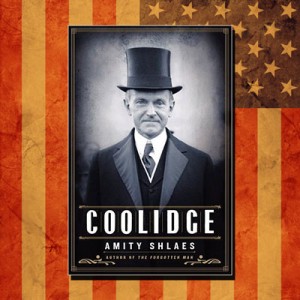 Amity Shlaes is a very good writer. She’s also a top-notch researcher. Her niche is showing how the 1920s and 1930s are not what many people think they were. Tackling academic political correctness is not for the fainthearted, so she apparently has a rather stout heart. I first became acquainted with her writing in the book The Forgotten Man, which lanced effectively the liberal-progressive theme that FDR was the nation’s savior during the Great Depression. Now she has struck again.
Amity Shlaes is a very good writer. She’s also a top-notch researcher. Her niche is showing how the 1920s and 1930s are not what many people think they were. Tackling academic political correctness is not for the fainthearted, so she apparently has a rather stout heart. I first became acquainted with her writing in the book The Forgotten Man, which lanced effectively the liberal-progressive theme that FDR was the nation’s savior during the Great Depression. Now she has struck again.
 Her newest work is simply entitled Coolidge. In it, she resurrects the reputation of the president that most liberals enjoy ridiculing. I’m only about halfway through the book, but already I deeply appreciate her ability to explain people by placing them into the context of their times, rather than imposing a later worldview onto them for the sake of merciless critique.
Her newest work is simply entitled Coolidge. In it, she resurrects the reputation of the president that most liberals enjoy ridiculing. I’m only about halfway through the book, but already I deeply appreciate her ability to explain people by placing them into the context of their times, rather than imposing a later worldview onto them for the sake of merciless critique.
What I find especially interesting in her portrait of Coolidge is her depiction of his journey from a progressive Republican to what he is better know for today—the staunch conservative that Ronald Reagan used as a model when he took the presidency. Her research indicates that it took some years for Coolidge to fully develop his beliefs, and that they were only coming to fruition around the time he became governor of Massachusetts and then vice president under Warren Harding after the 1920 election.
One of the highlights of the book thus far is her description of how Coolidge handled the Boston police officers’ strike in 1919. By standing firmly for law and order and rejecting the idea that police could strike, thereby harming the public safety, he won the admiration of an entire nation. It was that key event that lifted him into the national political arena.
I normally don’t review books without reading them all the way through first, but thought I’d give a heads-up on this one because I already know it’s worthy of your time. Perhaps when I finish it, I’ll provide an update on what I gleaned from the last half. In the meantime, I just plan to enjoy the rest.
